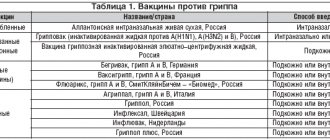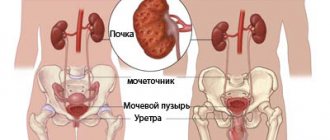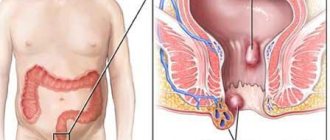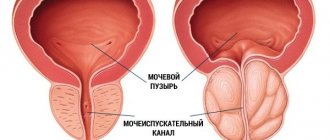Stomach flu
- this is not one, but a whole group of viral diseases, in which symptoms are pronounced, similar to intestinal pathologies, in particular gastroenteritis. The disease received its name due to the similarity of clinical signs with regular flu, namely:
- outbreaks during autumn and winter;
- rapid infection occurs, up to epidemics;
- catarrhal lesions are observed in the oropharynx;
- the disease is transmitted by airborne droplets (one of the methods);
- the disease lasts on average 7 days.
Those at risk are more likely to get sick
The group most susceptible to intestinal flu infection is young children under 3 years of age.
, about 50% of all intestinal problems are associated with this disease. It is worth noting that when breastfeeding, the baby is protected by the mother’s immunity, and the incidence of diseases during this period is extremely low. If the child is weaned, then in such cases infection is registered already from 3 months of age. After an illness, the child gains immune experience and the risk of further infections is reduced.
Older people get sick much less often; on average, this is every 4th case of intestinal infection.
Also included in the risk group is
people with weakened immune systems:
- in the presence of transplanted organs;
- cancer patients;
- for chronic gastrointestinal diseases;
- HIV patients;
- pregnant women.
What consequences can rotavirus have?
In mild cases, the infection usually ends without complications, and the body recovers in one to two weeks. In severe cases of the disease and untreated, the disease can be complicated by severe manifestations of dehydration: kidney failure, shock, malabsorption of nutrients in the stomach and intestines, blood thickening, interruptions in heart function, decreased body defenses and secondary infection.
Long-term consequences of untreated rotavirus infection include:
- dysbacteriosis;
- chronic gastritis;
- chronic colitis;
- avitaminosis;
- insomnia;
- anemia.
As a result of weakening the body's defenses, herpes, skin acne and fungal infections can develop.
If you seek medical help in a timely manner and treatment is started on time, the prognosis for rotavirus infection is favorable.
A few words for pregnant women: as a rule, rotavirus is not dangerous to the fetus. The main threat of this infection is dehydration of the expectant mother!
Causes of intestinal flu
As mentioned above, the cause of this disease is viruses that have the ability to carry out their life activities in the epithelial cells of the small intestine.
Adenoviruses
They have increased resistance and survival, as a rule, they affect the upper respiratory tract, are accompanied by conjunctivitis, and the epithelium of the small intestine is also affected. This virus is especially dangerous for children under 2 years of age; adults, as a rule, have acquired immunity. The method of transmission is airborne, fecal, through contact with household items, food, water. Disinfection methods are ineffective; ultraviolet light is used to destroy viruses, or when heated to more than 60 degrees.
Rotaviruses
It selectively affects the upper respiratory tract and epithelial cells of the small intestine; during an exacerbation, it circulates in the blood and affects liver cells. Standard disinfection methods are not effective; the virus is very resistant and only dies when boiled. Remains viable on surfaces (eg fruit, door handles, towels) for up to 14 days.
Noroviruses (Norwalk)
It got its name from the city in the USA Norwalk, where an epidemic of “stomach flu” accompanied by vomiting was recorded. There is very little data about this virus, it is also very stable and has strong survivability, does not respond to standard disinfection methods, and dies at high temperatures. The disease spreads through water, food, contact household items, and seafood.
There are also Toroviruses and Astroviruses, but they are extremely rare.
Diagnostics
The results of the following studies help a pediatrician or therapist make an accurate diagnosis:
- a blood test showing an increase in the level of leukocytes;
- stool analysis, where there is an increase in leukocytes, starch grains, as well as undigested muscle fibers;
- serological blood test;
- positive results of infection of cell cultures with viral particles of the patient’s stool;
- PCR method that examines blood and stool samples.
Differential diagnosis is carried out to exclude a bacterial infection; the viral nature of the disease is confirmed by positive results of serological examination and bacterial culture.
How does stomach flu spread?
The disease spreads through infected people, through airborne droplets, and through feces
.
In other words, the virus spreads through contact objects, poorly processed foods, and neglect of personal hygiene. Intestinal flu spreads especially quickly in kindergartens, shared toys, tables, chairs, door handles, bed linen, pots.
I would especially like to note infection through bottled drinking water. There is evidence of large epidemics of intestinal flu that spread in this way. The fact is that these viruses can remain viable in water for months.
How does intestinal flu develop?
Viruses that cause disease enter the human body through the oral cavity, food, water, saliva, and dirty hands.
. They are not afraid of the acidic environment of the stomach; they easily overcome it and enter the intestines.
The main task of the intestines is to extract nutrients from food by breaking it down into its component parts using enzymes.
The entire surface of the intestinal walls is dotted with special villi, and these, in turn, are covered with epithelial cells - enterocytes. Intestinal influenza viruses, like parasites, penetrate these cells and begin to actively multiply, while the activity of the cell itself stops. Having reached critical filling, the cell literally explodes and mass infection of all surrounding cells occurs, the process repeats. As a result, first of all, the absorption of carbohydrates is disrupted; they begin to accumulate, creating a “plug” in the intestines. The body begins to supply liquid to dilute the resulting congestion, because of this, irritation of the intestinal walls occurs and reflex peristalsis is triggered, in simple words, diarrhea and diarrhea begin.
As a result of the overflow of the duodenum, food from the stomach cannot move normally, contractions of the walls begin and food comes out in the form of vomiting.
The immune system reacts to what is happening with the emergency production of specific antibodies, and the source of infection begins to decrease. Virus particles come out in the stool and begin a new round of infection.
Diagnosis of the disease
At the first appointment, the therapist listens to the patient’s complaints, studies the medical history, conducts a visual examination and palpation of the abdomen, measures body temperature and blood pressure.
To differentiate viral gastroenteritis from bacterial and determine the severity of the condition, laboratory diagnostics are performed, which may include:
- general and biochemical blood test;
- general urine analysis;
- examination of stool and vomit.
If necessary, the therapist refers the patient for consultation with a gastroenterologist or infectious disease specialist.
How does intestinal flu proceed, symptoms, signs
As has already become clear, this is essentially a group of diseases caused by various viruses, and the symptoms, as well as the course, are slightly different. On average, 7-10 days pass from the time of infection to the first manifestations. However, an infected person begins to infect others even before the first signs and symptoms of intestinal flu begin; this occurs towards the end of the incubation period.
As a rule, the onset of the disease is marked by a sharp rise in temperature of 38-40 degrees, diarrhea and vomiting. Less often, the patient begins to feel a loss of strength, a reluctance to eat, a headache, and may have a slight fever, but the next day, diarrhea and vomiting will definitely occur.
As a result of loose stools, the body rapidly loses fluid, dehydration occurs, this is very dangerous, especially for small children.
The gag reflex, as a companion to the disease, is also very dangerous, because it causes vomiting from everything, even from water. In such cases, hospitalization is necessary.
There may be nasal congestion and sore throat, especially when swallowing.
Temperature and fever last for 2 to 4 days; if this period increases, then most likely there is additional bacterial damage to the microflora.
Grodno Regional Children's Clinical Hospital
Details Published September 22, 2021
Rotavirus infection in children
According to WHO, every person (regardless of immunity status, gender and race) has had rotavirus infection. And those who have just been born will still have to get sick from rotavirus.
What is rotavirus infection, why is it dangerous and how to identify it? We will try to answer these and other questions in our article.
So, rotavirus infection is one of the acute intestinal infections caused by pathogens from the rotavirus family. Sometimes people call this disease “intestinal flu,” which is fundamentally wrong, since influenza viruses can exist and multiply only on the mucous membranes of the respiratory tract. But rotavirus “lives” in the small intestine and has nothing to do with damage to the respiratory tract.
Most often, this infection occurs in childhood and during the cold season. The virus is transmitted by contact - fecal-oral. You can become infected from a sick person through toys, dishes, door handles, household items, through water and food. The virus is very contagious!!!
After illness, a strong immunity to rotavirus is developed, but, unfortunately, it has almost no significance, since this virus has many varieties. Those. a person can become infected again.
After infection, the virus “lives” and multiplies in the human body asymptomatically for 3-7 days (incubation period). The disease itself takes about 2-3 days, sometimes up to 7—the acute period. The recovery period continues for at least another 5 days after the symptoms disappear.
A child is contagious ALL THE TIME from the moment of infection until the end of the recovery period!!!
The likelihood of infection does not depend in any way on the cleanliness of the child’s family. Children aged 6 months to 2 years are most often affected. In general, children from birth to 5 years of age are at risk.
The main symptoms of rotavirus infection are:
– watery diarrhea (diarrhea) without signs of blood;
- vomit;
– a sharp increase in temperature to high numbers (39 and above);
– pain in the abdomen;
- lack of appetite;
- loss of strength, weakness.
Diarrhea is the main symptom of rotavirus infection. As a rule, it lasts no more than 2 days, but is dangerous due to dehydration.
Dehydration is always a risk of damage to the nervous system, especially in children under 2 years of age. Body temperature may rise sharply, causing convulsions and then respiratory arrest. In addition, a lack of fluid in the body impairs the functioning of the lungs, which can lead to inflammation.
A typical picture: a child with dehydration ends up in the hospital, and 2 days later pneumonia is also discovered. His parents think that he became infected in the hospital, but in fact, lung problems are a common complication of any intestinal infection.
How can parents determine whether diarrhea is caused by a viral infection or food poisoning?
Food poisoning is caused by bacteria and diarrhea most often has a pasty consistency. Diarrhea with water, sour smell of feces - viral diarrhea.
The main thing that parents must learn to do is to quickly assess whether the child has signs of dehydration, since it is dehydration that poses a danger to life and health.
In all cases of diarrhea and/or vomiting in a small child, you should consult a doctor!
What symptoms should parents be alert to regarding dehydration?
If a baby's tongue becomes dry, he begins to cry without tears, does not urinate for more than 6 hours and practically does not sweat - this is a good reason to call an ambulance.
If the baby begins to lose consciousness, the eyes are “sunken,” the facial features are “sharpened,” and the body temperature is high—the help of doctors is required immediately.
If a child begins to become dehydrated and cannot or does not want to drink, then it is necessary to introduce fluid into the body intravenously. This is what inpatient treatment is based on.
If there are no signs of dehydration, then parents can easily cope with rotavirus infection at home.
So, what do you need and can do yourself?
The main principle of treating rotavirus infection is to prevent dehydration. To do this, the child must drink and drink a lot. The more often the better. You can drink in small portions, if it is difficult to drink in sips, from a teaspoon, from a syringe without a needle, but often.
The drink should be at room temperature, neither cold nor hot.
For drinking, it is better to use a saline solution, which is sold in a pharmacy, for example “Regidron” or similar ones. You can alternate the saline solution with regular boiled water. If your child urinates every 3 hours, it means he is consuming enough fluid.
If you can’t get something to drink even from a syringe or the child doesn’t drink enough, be sure to call an ambulance!
If, in addition to diarrhea, the child has vomiting, then the baby should be placed on his side so that he does not choke on the vomit.
Give antipyretics at a temperature of 38.5 and above (if there are no other indications).
Do not feed, especially by force! If your child asks to eat, you can give him some liquid porridge with WATER!
The diet should be followed not only during the acute phase of the disease, but also during the recovery process. Whole milk and dairy products, sweet fruits, baked goods, sweets, meat, fatty and fried foods are completely excluded from the diet. YOU CAN: water porridge, vegetable soups, white bread croutons, oven-baked apples. Feed frequently, but in small portions.
Very young children are not given a diet, breast milk is not limited, but they make sure that they drink plenty of fluids. Sometimes, due to an enzyme deficiency, infants may develop intolerance or partial intolerance to breast milk. In this case, reduce the frequency of breastfeeding and temporarily add lactose-free infant formula (until the child recovers completely).
You cannot take antibiotics on your own, since the disease is viral in nature, and antibiotics do not work on viruses.
As for antiviral drugs, unfortunately, at the moment there are no antiviral drugs with proven effectiveness against rotavirus.
Do not take antidiarrheal drugs! During rotavirus infection, microparticles of the virus are released in the stool. Therefore, stopping diarrhea means prolonging the disease, since virus particles will remain in the small intestine and continue to destroy beneficial cells.
Bed rest is not necessary if the child feels well enough. After the symptoms disappear, you can go for a walk, but avoid public places and contact with other children (playgrounds, playrooms, etc.).
A child can be sent to a kindergarten or school only after a recovery period, i.e. 5-7 days after the cessation of diarrhea and vomiting.
Doctor - pediatric neurologist KFD Glybokaya O.L.









